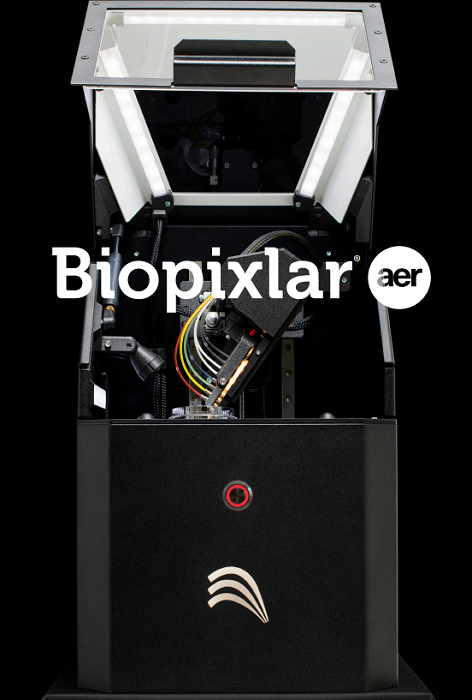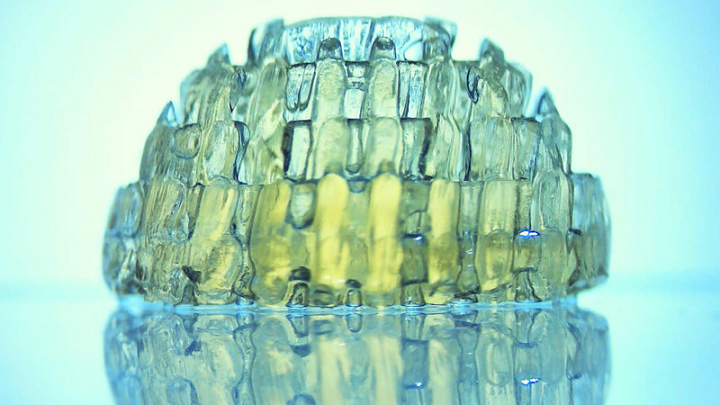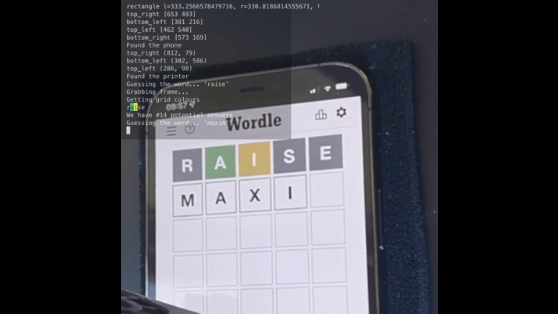In today’s 3D Printing News Briefs, Oerlikon and the Technical University of Munich are founding an advanced manufacturing institute together. In bioprinting news, Fluicell just launched a new system, a joint research team based in China developed a six-axis bioprinting platform, and Cellink will work to upscale CollPlant’s regenerative breast tissue platform. Moving on, Iowa State researchers have tested their novel 3D printing process in zero gravity. Finally, a Wordle player used a 3D printer and Raspberry Pi board to automate the game.
TUM & Oerlikon Founding Advanced Manufacturing Institute
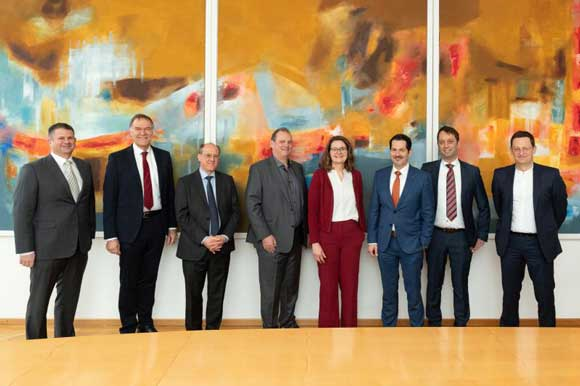
Representatives from the Technical University of Munich (TUM) and Oerlikon (Image courtesy of Oerlikon via LinkedIn)
Together, the Technical University of Munich (TUM) and Swiss engineering and tech group Oerlikon will be jointly founding an advanced manufacturing institute in order to drive 3D printing and master the challenges on the way to industrialization. For the first five years, the TUM-Oerlikon Advanced Manufacturing Institute, based on TUM’s campus, will be funded with an annual budget of €3 million. Also over those five years, up to thirty dissertations will be supervised that focus on technical research from the whole AM value chain, including new materials, the printing process itself, and the interactions between the two.
“Our research efforts focus primarily on technical challenges which, once we have surmounted them, will speed up the development of 3D metal printing,” Dr. Nikolaus A. Adams, Director of the Chair Aerodynamics and Fluid Mechanics at TUM, explained about the research projects. “For example, we are already working together on the new ultra-strong light aluminum-based alloys that are in high demand in the industry, on demanding new simulation techniques to predict the melting and solidification process for metal powders and on the development of a digital certification process using components produced for the aerospace industry with the help of advanced manufacturing.”
Fluicell Launched New Bioprinter
Swedish biotechnology company Fluicell introduced its single-cell bioprinting system, the Biopixlar, in 2019. This month, it launched the Biopixlar AER, a new high-resolution single-cell bioprinter that’s automated and portable. The microfluidic platform is compact enough to fit inside a standard cell culture flow hood, which makes it easy to use with other 3D cell culture technologies. The new Biopixlar AER also offers remote control. All of these features combine to create a system well-suited for demanding workflows, like deep-sea exploration and aerospace applications.
“Biopixlar AER is truly a breakthrough technological achievement, representing a product offering perfectly in line with our overall aspiration and ethos to join biology and technology in order to meet future healthcare needs,” said Fluicell CEO Victoire Viannay. “Biopixlar AER fits perfectly into Fluicell’s strategy to make a difference for researchers by increasing the flexibility, performance and adaptability in bioprinting. Biopixlar AER is also targeting new customer segments that emphasize the ability to parallelize and automate bioprinting and cell culture processes.”
Novel Robotic Six-Axis Bioprinter

Novel six-axis robot-based bioprinting system and its printing products. A. Six-axis robot bioprinting platform and the printed IGDB letters composed of eGFP-labeled endothelial cells; B. Bioprinted artificial blood vessel is capable of forming new capillaries (left and middle, green color is eGFP-labeled endothelial cells). Bioprinted vascularized cardiac tissue (right, green color is cardiac tissue and red color is vascular network); C. Two-robot cooperation platform (left) can simultaneously print different types of cells onto complex-shaped vascular scaffold (middle) to form patterned cell organization (right). (Image: IGDB)
A collaborative team of researchers from the Institute of Genetics and Developmental Biology of the Chinese Academy of Sciences, the University of Manchester, and Tsinghua University published a study detailing their work developing a novel 3D bioprinting platform. The researchers converted a six-axis robotic arm into a bioprinter, which made it possible to print cells from every direction. They did this by combining the bioprinter with an oil bath-based cell printing system, which printed a complex blood vessel scaffold without damaging the cells or compromising their function.
The natural organ developmental process inspired the team to set up a repeated cell printing and culturing bioprinting strategy. This could potentially generate complex tissues and organs, with 3D printed cells connecting with blood vessel networks. The researchers demonstrated that their technique was feasible by printing endothelial cell and cardiomyocyte bioinks onto blood vessel scaffolds. In this way, they generated a piece of vascularized cardiac tissue that remained alive and beating for at least six months.
CELLINK, CollPlant Upscale Production of Regenerative Breast Implants
In continued bioprinting news, bioprinting leader CELLINK, a BICO Group company, and regenerative and aesthetic medicine company CollPlant Biotechnologies have entered into a collaboration. Together, they will explore using CELLINK’s high-throughput, multimaterial bioprinters for future large-scale production of CollPlant’s regenerative breast implants. CollPlant uses its rhCollagen and other biological components to fabricate prototypes of 3D bioprinted implants meant to regenerate breast tissue. Currently being evaluated in preclinical studies, these regenerative implants were designed to degrade gradually and be replaced by new, natural breast tissue. With CELLINK’S expertise and large-scale bioprinting production process, it will be able to help CollPlant continue these important studies.
“We are very pleased to enter into the collaboration with CELLINK, a recognized leader in development of 3D bioprinting solutions for the life-science industry. We believe CELLINK’s high throughput bioprinters and biofabrication expertise will help us move toward the successful commercialization of our technology and to deliver a much-needed solution to patients around the world,” stated CollPlant CEO Yehiel Tal.
NINJAS Test Novel 3D Printing Process in Zero Gravity
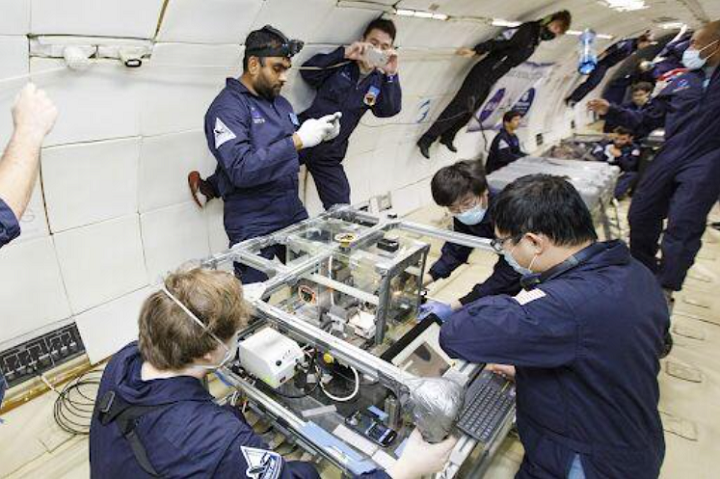
The NINJAS team tests their 3D printing process during a zero-gravity test flight. (Image courtesy of Hantang Qin)
Moving on, Iowa State University research team NINJAS, which stands for No-Gravity Ink Jet Printing for Aeronautics and Space, has successfully tested a novel 3D printing process that works in zero gravity. They saw a need for zero-g 3D printing in long-term space exploration, and developed the process at the university’s Flexible Electronics and Additive Printing (FEAP) Laboratory. One group of researchers created the printer itself, which sets the ink with electrical force instead of gravity, while another group developed patent-pending inks made with silver and barium titanate. The researchers tested out the printer and inks at Fort Lauderdale International Airport, Zero Gravity Corporation’s research facility. Aside from dealing with motion sickness due to the environment, the NINJAS team learned a lot during the three-day testing period.
“[The] first day gave us really precious experience. We realized a few things we didn’t do 100 percent,” explained Shan Jiang, an assistant professor in materials science and engineering and one of the co-principal investigators. “It went really well the second and third day. We printed out some nice patterns. It was the first time we proved that our 3D technology and nano ink can be used in a zero-g environment.”
3D Printer & Raspberry Pi Used to Automate Wordle
Finally, unless you’ve been living under a rock the last several months, you’ve probably heard of Wordle. The word-guessing game, developed by a software engineer and later purchased by The New York Times, gives players six chances to guess the correct five-letter word of the day. Everyone has their own strategies for winning, but Reddit user iamflimflam1 took things to the next level by automating the game. Using a 3D printer as a robot, and a Raspberry Pi for image processing and puzzle-solving, the creation can solve the Wordle puzzle in less than a minute! The two big challenges are said to be locating the phone’s screen and the printer bed, and the print speed was set as high as it could go in order to type out the letters really fast.
“Once we have the locations of those two objects we can create a transform from locations on the phone’s screen to locations in the grabbed image. And then we can create a transform from the grabbed image to locations on the printer bed,” iamflimflam1 wrote.
“These two transforms let us tell the printer where to move to so that it can touch the keys on the screen. Reading back the colours of the guessed word is pretty straightforward as we know where the grid boxes are on the phone’s screen and as we have the transform we know where the grid boxes are in the grabbed image.”
The source code for this creation was posted to GitHub if you want to try it out. See the automated Wordle play in action below:
Subscribe to Our Email Newsletter
Stay up-to-date on all the latest news from the 3D printing industry and receive information and offers from third party vendors.
You May Also Like
3D Printing Financials: Fathom Struggles in Financial Quicksand During Critical Transition
Facing a year of key transitions and financial pressures, Fathom (Nasdaq: FTHM) has filed its annual report for 2023 with the U.S. Securities and Exchange Commission (SEC). The document outlines...
Latest Earnings Overview for Australian 3D Printing Firms Titomic and AML3D
Australian 3D printing manufacturing firms Titomic (ASX: TTT) and AML3D (ASX: AL3) reported their financial results for the period from July to December 2023, marking the first half of their...
3D Printing Webinar and Event Roundup: April 7, 2024
Webinars and events in the 3D printing industry are picking back up this week! Sea-Air-Space is coming to Maryland, and SAE International is sponsoring a 3D Systems webinar about 3D...
3D Printing Financials: Unpacking Farsoon and BLT’s 2023 Performance
In the Chinese 3D printing industry, two companies, Farsoon (SHA: 688433) and Bright Laser Technologies, or BLT (SHA: 688333), have recently unveiled their full-year earnings for 2023. Farsoon reported increases...


